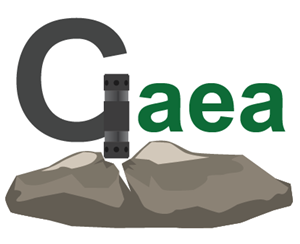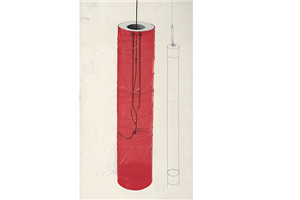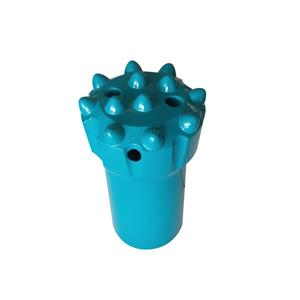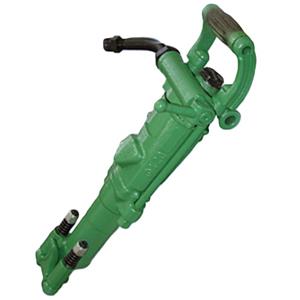Tunnel Rock Blasting Safety Management Measures
Tunnel Rock Blasting Safety Technical Measures (BPYDT) In order to ensure the safety of tunnel construction and prevent blasting accidents, the following safety technical measures are formulated:
1. Personnel responsible for blasting must have a correct mindset, work conscientiously and responsibly, and obtain a "blaster's operating certificate" after passing the training examination.
2. During blasting work, you must obey orders and follow commands. Strictly implement the "National Blasting Safety Regulations" to achieve standard construction and standardized operations.
3. Drilling: ①. When the driller arrives at the work site, he should first check whether the working surface is in a safe state. For example, whether the supporting top plate and the two sides are firm, if there are loose rocks, they should be supported or removed immediately. This process is called "knocking the side and asking the top" in some places. ②. When drilling with a rock drill, a wet rock drill or a rock drill with a dust collector must be used. ③. When drilling with a pneumatic drill with a bracket, the bracket must be placed securely. When drilling on the slag pile, pay attention to the stability of the slag pile to prevent collapse and injury. ④. Drilling and charging cannot be done in parallel. ⑤. It is strictly forbidden to continue drilling in the residual hole. ⑥. Drilling must be done strictly according to the design, and the error of the inclination of the surrounding eyes is ±3%, and the plane error is ±1cm.
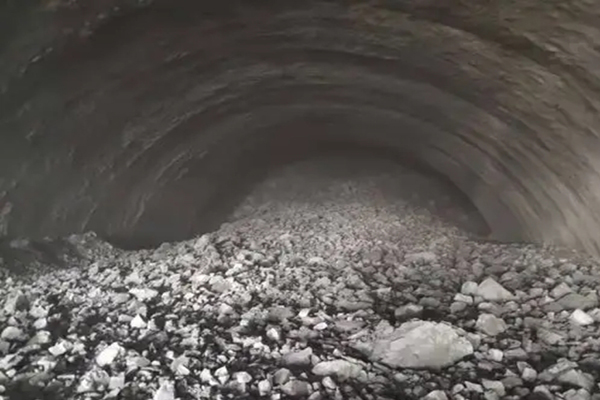
4. Processing of blasting equipment: ①. The processing of blasting equipment must be carried out in the processing room. It is strictly forbidden to process in the living area and near the blasting equipment warehouse. ②. During the processing, the blasting equipment must be handled with care, and it is forbidden to hit or throw it. The processing quantity should not exceed the amount required for the blasting operation on duty. ③. The weight of the explosive package and the distance between the explosive packages must be strictly carried out according to the blasting design, and the error range cannot exceed 3% of the design. ④. Only the detonating cord is allowed to be cut with a sharp knife, but it is forbidden to cut the detonating cord connected to the detonator or inserted into the explosive. ⑤. Tunnel Rock Blasting shall not use explosives that produce a large amount of harmful gases such as TNT (trinitrotoluene), picric acid, and black powder.
5. Charge and blockage: ①. When charging, the inspection and acceptance of the blastholes should be carried out. If the relevant blastholes are unqualified, they should be actively resolved or reported so that measures can be taken quickly. ②. When charging, thoroughly remove the dirt and deposits in the holes. When using high-pressure air to blow the holes, pay attention to protection to avoid being injured by the sand and gravel blown out. ③. Use wooden or bamboo gun sticks to gently push the medicine rolls into place. The medicine rolls should be close to each other and no debris should be allowed in between. When the gunholes are blocked by gun mud, the blocking force should be moderate. ④. Blockage should be done carefully and the detonation line should not be damaged. ⑤. It is forbidden to block the blastholes with stones or flammable materials. ⑥. It is forbidden to tamp the blockage that directly contacts the powder bag or to impact the detonating powder bag with the blocking material. ⑦. It is forbidden to pull out or forcibly pull the detonator and detonating cord in the detonating powder bag. ⑧. It is strictly forbidden to charge in the following situations: a. Insufficient lighting b. The rock on the working face is broken and has not been supported in time c. Quick sand and mud are found without proper treatment d. There may be a large amount of cave water and high-pressure water gushing out.
6. Blasting network: ①. The detonator for detonating the detonating cord should be tied tightly at 15cm from the end of the detonating cord, and the energy-gathering hole of the detonator should face the direction of the detonation of the detonating cord. ②. There should be no dead knots in the detonating cord network, no joints in the hole, and there should be enough spacing between the detonating detonators outside the hole. ③. When using detonators to detonate the detonating cord network, measures should be taken to prevent the concentrated hole of the detonator from blowing off the detonating cord. The detonating cord should be evenly applied around the detonator and tied firmly with adhesive tape. When tying, one detonator is generally not more than 20 non-electric tubes. ④. The detonating cord and detonating cord used in the same working surface must be products of the same factory and batch number. ⑤. Connecting the blasting main line and the foot line, checking the line conduction and detonation operation must be performed by a designated blaster alone.
A. When using digital electronic detonators for detonation, it is necessary to follow the operating procedures of digital electronic detonators. The line card needs to be waterproof to avoid explosion rejection due to leakage.
B. When setting the delay time of the blast hole with a digital electronic detonator, there must not be any extra personnel gathering on the working face to prevent premature explosions caused by improper operation or product quality problems during the setting process. There was such a case in the early days of the emergence of digital electronic detonators, where the detonator was detonated when the delay time was set.
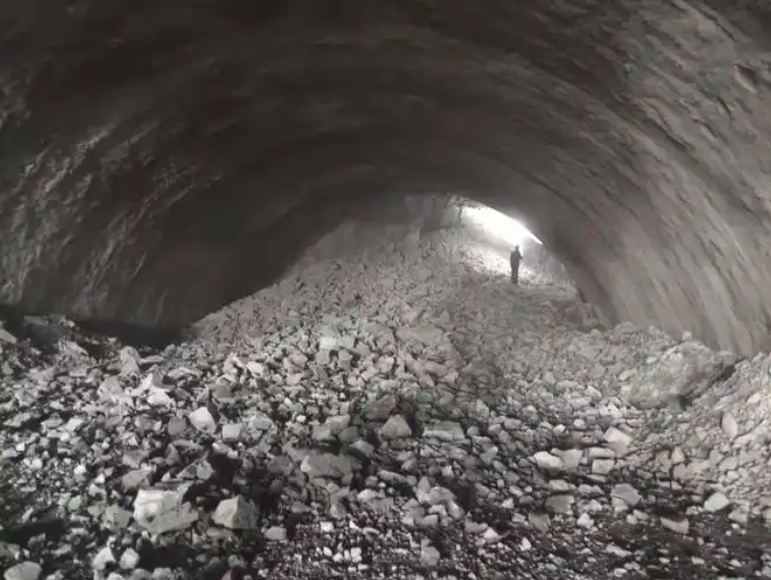
7. Warning and detonation: ①. Before blasting, all personnel and machinery should be withdrawn to a safe place that is not harmed by harmful gases, vibrations and flying stones. ②. Under the organization of the blasting team (group) leader, blasters should enter the designated warning position, and pedestrians, vehicles and livestock are strictly prohibited from entering the cordon. ③. The blasting signal is stipulated as follows: a. Warning zone signal - a continuous long whistle, which is issued ten minutes before the blasting. At that time, all construction personnel and machinery are withdrawn outside the danger zone, and the warning personnel enter the designated warning position. b. Blasting signal - a continuous short whistle, which is issued one minute before the blasting after confirming that all personnel and machinery have evacuated the danger zone, and detonation is carried out one minute later. ④. After blasting, ventilation and smoke exhaust must be carried out, and the time from blasting to blasting must be no less than 15 minutes before inspection personnel are allowed to enter. After various inspections and proper handling, other staff are allowed to enter the working face. ⑤. Inspectors mainly check whether there are explosion refusal, blind shots, landslides, roof falls, etc., and danger warnings or signs should be set up before handling.
8. Technical measures for blind shot handling: ①. Blind shots must be handled by the blaster on duty. When handling blind shots, irrelevant personnel are not allowed to be present. Danger warnings should be set up, and other operations are prohibited in the danger zone. ②. It is prohibited to pull out or take out the detonating charge package. ③. After inspection and confirmation that the detonation line of the blasthole is intact, it can be re-detonated. ④. When blasting parallel holes, the parallel hole shall not be less than 0.3m away from the blind hole mouth. In order to determine the direction of the parallel blasthole, it is allowed to remove the blockage of no more than 20cm in length from the blind hole mouth. ⑤. At a safe distance, use a remotely controlled Fengshui nozzle to blow out blind shot blockages and explosives, but measures must be taken to retrieve the detonator. ⑥. When a blind shot occurs during electric initiation, the power supply must be cut off immediately and the blasting network must be short-circuited in time. ⑦. After the blind shot is handled, the blast pile should be carefully checked and the remaining blasting equipment should be collected. Before determining whether there are any remaining blasting equipment in the blast pile, preventive measures should be taken. ⑧. Each time a blind shot is handled, the handler must fill in a registration card.
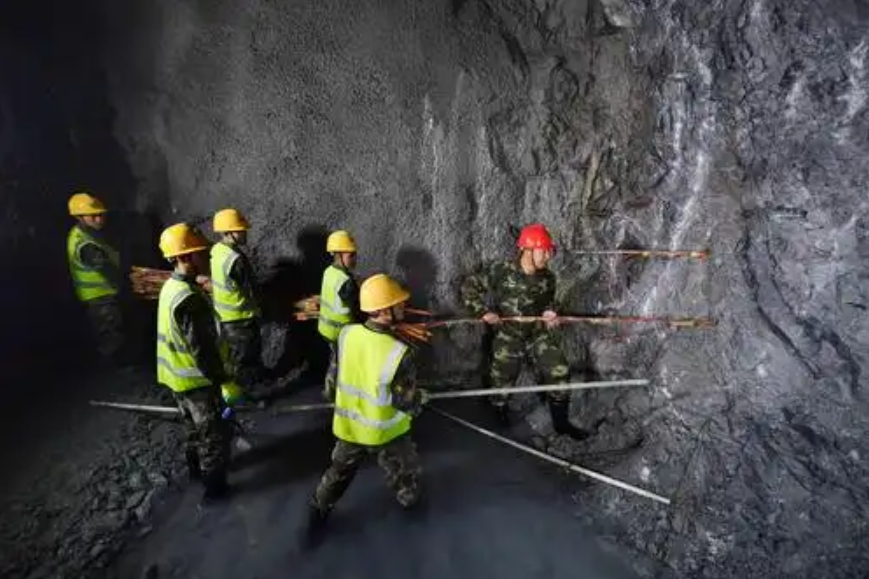
9. When the two working faces are close to being connected, the connection and unified command at both ends should be strengthened. When the distance between the two working faces is 8 times the cycle footage (the minimum shall not be less than 15m), one end of the work should be stopped, the personnel and equipment should be withdrawn, and a warning sign should be set up at a safe distance.
10. During the blasting operation, you must be rigorous and serious and concentrate. It is strictly forbidden to drink alcohol during operation, carry fire, wear chemical fiber clothes, and wear iron nail shoes.
11. All kinds of blasting instruments should be fully inspected once a month, and the capacitor detonator should be energized at least once a month.
12. Open fire operations and heating are strictly prohibited in tunnels.
13. For tunnel construction in bad areas, small-cycle construction methods such as weak blasting and short excavation should be adopted.
14. Since the stone in the blasting pile is loose and easy to collapse, no or less blasting should be done during construction, and the direction, depth, and amount of blastholes should be strictly controlled.
15. All blasting personnel should concentrate their thoughts and should not look around or talk about anything.
16. In order to reduce blind blasting caused by moisture in blasting equipment. The time between charging and blasting should not be too long.
17. Powdered ammonium nitrate explosives with a moisture content of more than 0.5% are not allowed.
18. When loading blasting slag, a dedicated person should check whether there are unexploded detonators and explosives in the blasting slag. For unexploded detonators and explosives, they should be handed over to a dedicated person for centralized and unified destruction.
19. When using electric detonation, the detonator can be connected only after everything is ready. When using spark detonation, when determining the length of the detonating lead, the length of the detonating lead and the signal lead should ensure that the person who ignites the blasting can walk to a safe distance for avoidance.
20. Personnel who have made outstanding achievements in production safety and prevention of blasting accidents during blasting operations should be commended or rewarded.
21. The establishment of blasting equipment warehouses, transportation, management, and use of blasting equipment are shown on another page.
22. Other matters shall be implemented in accordance with the national "Explosive Safety Regulations".
Key points for setting up explosive material warehouses (BPYDT)
1. The establishment of temporary explosive material warehouses must comply with the national "Explosive Safety Regulations" to determine the minimum safe distance between the warehouse area and the village and residential area. The maximum storage capacity of temporary explosive material warehouses is 10 tons of explosives and 20,000 detonators.
2. Temporary ground warehouses should be set up in places that are not threatened by mountain torrents, landslides and dangerous rocks.
3. It is allowed to use various houses, earthen kilns and carports with strong structures but no people as temporary explosive material warehouses.
4. Temporary warehouses must meet the following regulations:
a. The floor of the warehouse must be flat and seamless.
b. If the walls, floors, roofs and doors are wooden structures, they should be painted with fireproof paint, and the windows and doors must have a layer of outer iron sheet.
c. It is advisable to set up simple fences or iron barbed wires with a height of not less than 2m.
d. There must be enough fire-fighting equipment in the warehouse.
e. An independent distribution room must be set up in the warehouse with an area of not less than 9m.
5. Detonators and explosives should be stored separately in two warehouses. The external lines of the warehouse area should be buried or hung with armored cables. The external electrical lines are prohibited from passing through the sky above the explosive material warehouse. The power switch and fuse should be installed in the safe area of the warehouse area and installed in the distribution box.
6. It is prohibited to install electric lighting in the warehouse. Natural lighting or searchlights can be installed outside the warehouse for projection lighting.
7. When using mobile lighting, only safety flashlights and gasoline safety lights are allowed. Mobile hand lamps powered by the power grid are prohibited.
8. Detonators should be placed on shelves, and explosives should be placed on pads. The width of the passage between the racks and piles should not be less than 1.3m, the distance between the racks and the wall should not be less than 20cm, and the height of the stacked explosives should not be less than 1.6m.
9. Where there is lightning, lightning protection devices should be installed, and there should be good drainage channels in the warehouse area.
Fire Prevention System for Explosive Material Warehouse (BPYDT)
1. Non-staff members are prohibited from entering the warehouse area. Personnel entering the warehouse area are not allowed to carry fire, flammable, and explosive dangerous goods with them.
2. It is forbidden to use open flames, electric welding, and gas welding in the storage area.
3. It is forbidden for guards to smoke, use fire, and use electrical equipment in the storage area.
4. It is forbidden to hunt, set off guns, and graze in the storage area.
5. Ensure that fire-fighting facilities are in good condition and report any situation in a timely manner.
Explosive equipment collection and clearance system
1. Units using explosives must strictly implement the Regulations of the People's Republic of China on the Management of Explosives to ensure construction and production safety.
2. Units using explosives must formulate explosive safety management systems and safety technical operating procedures, establish a safety post responsibility system, and set up safety management departments or safety officers. 3. Units using explosives must state the location, name, quantity, and purpose of the explosives, and use them only after approval by the superior competent department.
4. Units using explosives must obtain construction plans issued by engineering and technical personnel to obtain explosives, and can only obtain them after approval by the on-site person in charge and relevant departments.
5. There must be more than two people to collect detonators and explosives, and the distance between the two people must be more than 20 meters.
6. When collecting explosives, the quantity collected shall not exceed the quantity used during the shift. The remaining quantity shall be returned on the same day and registered.
Explosives Management System
1. The explosives warehouse shall meet the requirements of explosion-proof, lightning-proof, moisture-proof, fire-proof and rodent-proof, and have good ventilation equipment. The temperature shall be maintained between 10C° and 30C°.
2. Smoking and bringing in fire sources are strictly prohibited in the warehouse. Warehouse managers and drug collectors shall not wear spiked shoes into the warehouse.
3. The explosives in the warehouse shall not exceed the prescribed storage volume. The stacking height of the medicine boxes shall not exceed 1.8m, the distance between boxes shall be 3 cm, and the length of each side of the stacked boxes shall not exceed 5 m. There shall be at least 10 cm gap between the boxes and the ground. Explosives of different properties shall be stored in separate warehouses.
4. Unpacking of explosives shall be carried out at a safe distance outside the warehouse. It is strictly forbidden to knock hard.
5. Detonators and explosives must be collected during the day, and the blaster is responsible for putting them into non-metallic containers. It is strictly forbidden to put them into pockets. The recipient must deliver them to the site in person and they must not be transferred.
Explosive Equipment Use System
1. All blasting personnel directly engaged in the blasting site must work seriously and responsibly, and must be qualified blasters.
2. Each blasting equipment collected is limited to use on duty. The remaining blasting equipment should be returned to the explosives warehouse in time. It is strictly forbidden to place the blasting equipment anywhere else or wait for the next shift to use it.
3. After the blasting equipment arrives at the site, it must be strictly managed. Detonators and explosives should be placed separately and placed in places where construction personnel on site can often see them. Otherwise, a special person should be assigned to look after them.
4. When using blasting equipment, it must be handled with care. It is strictly forbidden to rub, hit, or throw blasting equipment.
5. When using explosives, use a wooden or bamboo cannon stick to gently push the explosive roll into place. Each roll should be close to each other, and there should be no debris in the middle. The force should be moderate. It is forbidden to tamp the blocking materials that directly contact the explosive package or use the blocking materials to impact the explosive package.
6. When the explosive package is loaded into the blast hole, it is forbidden to pull out or forcibly pull up the detonator and detonating cord in the explosive package.
7. There should be no dead knots in the detonating cord network, no joints in the hole, and there should be enough spacing between the detonating cords outside the hole.
8. The detonating cords and detonating cords used in the same work must be products of the same factory and batch number. The main blasting line and the foot line are connected, and the line conduction and detonation operations must be checked by a designated blaster.
9. The blasting equipment received is limited to construction and production. It is strictly forbidden to misappropriate, privately use, privately store, transfer, resell, and lend. It is strictly forbidden to use it for frying fish and frying animals.
10. The blasting site is closed for operation. No one is allowed to enter. Non-blasting construction personnel are prohibited from touching blasting equipment.
11. After the blasting is completed and the smoke has dissipated, the blasting site must be carefully checked to see if there are any unexploded explosives and detonators. If there are any, they should be handed over to a designated person for safekeeping and destroyed uniformly.
